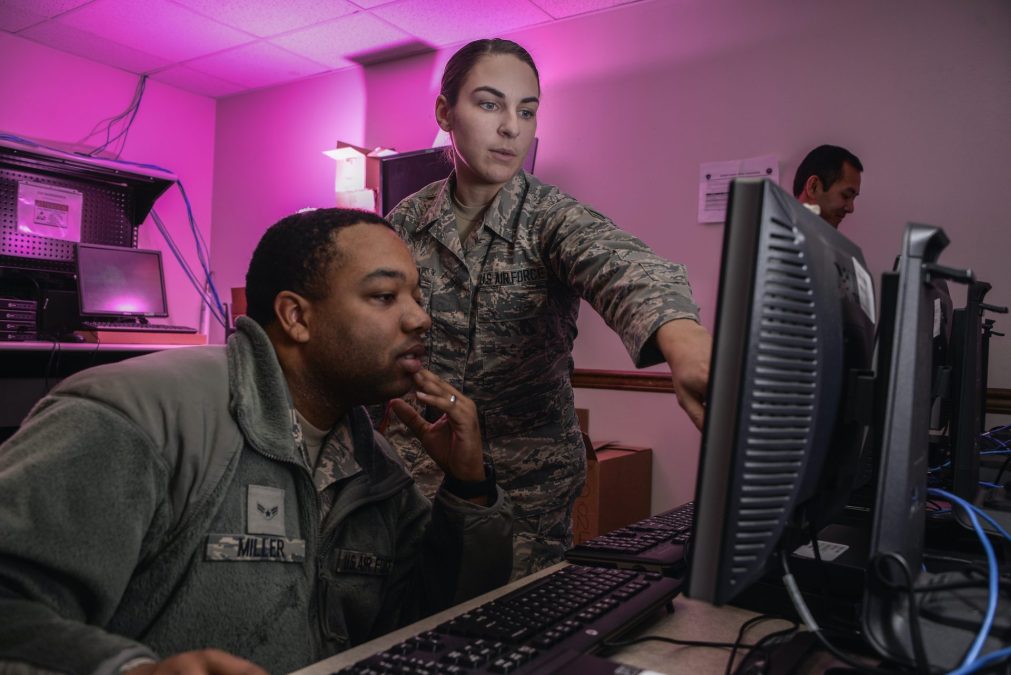New Air Force strategy looks to increase adoption of commercial networking tech

The Department of the Air Force’s chief information office is looking to integrate more commercial capabilities as it works to modernize and secure the department’s IT networks, according to a new strategy released Wednesday.
The plan, dubbed DAF Network of the Future, outlines the department’s goal for an IT infrastructure that is both protected from attacks from adversaries, as well as flexible enough to rapidly send data across the globe. The strategy is organized across six wide-ranging objectives, each comprising different action items, capabilities or programs the DAF intends to pursue.
“The Network of the Future will serve as the backbone for seamless connectivity, real-time data sharing, and rapid decision-making across all domains to provide our warfighters with access to data they need anytime, anywhere,” Chief Technology Officer Scott Heitmann wrote in the document. “By investing in foundational technologies such as artificial intelligence, advanced cybersecurity, edge computing, and 5G communications, the DAF will lay the groundwork to transform today’s emerging capabilities into tomorrow’s industry standards.”
While the new strategy points to a range of emerging technologies that officials hope to leverage — such as artificial intelligence and satellite communications — a key aspect of the plan involves increasing adoption of commercial tech that can enhance the Air Force and Space Force’s IT infrastructure.
The department intends to leverage the National Security Agency’s Commercial Solutions for Classified (CSfC) program at the enterprise level, putting readily available commercial solutions with the highest security clearances directly into the hands of warfighters. The program allows for commercial networking capabilities validated against NSA’s cybersecurity standards to be used by government agencies for their specific needs.
“Leveraging CSfC through an enterprise implementation will negate the need for custom classified systems and allow the DAF to equip the warfighter faster using existing commercial technology, streamlining access and deployment to improve [user experience],” the strategy stated.
In addition, the department plans to diversify its data transport methods by integrating additional commercial services. The document specifically points to low-Earth orbit (LEO) satellite communications developed by commercial industry as a way to offer scalable and secure connectivity, including in areas with little-to-no IT infrastructure.
Other transport methods the department is considering include 5G communications to increase network bandwidth and speed and dark fiber solutions to establish private networks resistant to cyber attacks.
“As bandwidth demand increases, it is critical that the DAF provide our warfighters the capabilities to both manage available bandwidth transfer and increasing amounts of data so the U.S. may retain information and decision advantage,” officials wrote.
Commercial services and standards will also play a key role in the Base Infrastructure Modernization (BIM) program, a $12.5 billion project that aims to completely overhaul the DAF’s existing base area network infrastructure.
According to the strategy, the department wants to leverage “industry-leading commercial services” as part of the modernization effort, as well as commercial-off-the-shelf solutions to support “non-mission critical requirements.”
“This modernization will pave the way for increased flexibility for warfighters to perform their duties via new and adaptive technologies, transforming DAF Base Networks to highly performant architectures and ‘As-a-Service’ operations,” the document noted.






